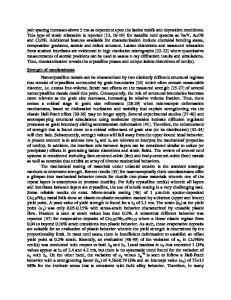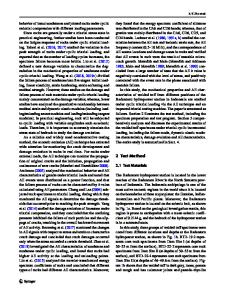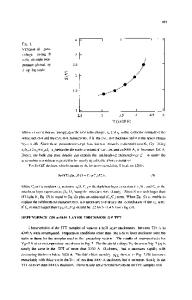Interface Characteristics and Mechanical Properties of the Vacuum-Brazed Joint of Titanium-Steel Having a Silver-Based B
- PDF / 711,813 Bytes
- 7 Pages / 593.972 x 792 pts Page_size
- 65 Downloads / 264 Views
INTRODUCTION
STEEL is the most widely employed structural material in modern industry. However, in many applications, the characteristics of steel (i.e., corrosion resistance, high-temperature mechanical properties, and low density for power saving) do not satisfy the requirements for use in certain industries. In such cases, there was considerable interest in joining steel to high corrosion-resistance materials such as titanium alloys. The high strength to weight ratio and excellent corrosion resistance of titanium and titanium alloys[1–3] have led to considerable interest in joining titanium to steel, because there is a wide range of applications for this joint in the aerospace, petrochemical, power generation, and transportation industries.[4,5] As a result of their poor miscibility, titanium and steel exhibit poor metallurgical compatibility, which promotes the formation of brittle intermetallic phases.[6] Such joints, if successfully made, will possess all the requirements for high-quality joints and also reduce the amount of materials needed, thus making them economically attractive and viable. There have been various reports that demonstrate that diffusion bonding has been used successfully in joining titanium to steel alloys. However, the great care required in the surface preparation stage and the impracticality of this method for mass production have limited the usage of this process.[7–11] Explosive welding has also been used to clad titanium to steel alloys in many applications.[12–15] Although brazing has the potential to join dissimilar metals, because it involves A. ELREFAEY, Postdoctoral Fellow, and W. TILLMANN, Head, are with the Institute of Materials Engineering, Faculty of Mechanical Engineering, University of Dortmund, Dortmund 44227, Germany. Contact e-mail: [email protected] Manuscript submitted January 29, 2007. Article published online November 13, 2007 2956—VOLUME 38A, DECEMBER 2007
melting of the filler material only which eliminates the problems that occur when dissimilar metals are fused,[16,17] to the best of our knowledge, only data on microstructure investigations on brazing titanium to stainless steel have been reported.[18,19] Of the various brazing filler materials that could be employed, silver and its alloys have the potential to braze this joint, because they are widely used to braze most titanium alloys.[19–21] However, silver-based braze alloys with Zn or Cd additions cannot be applied in vacuum brazing due to the high vapor pressures of these elements. Near-eutectic silver-based alloy with a few percent of Ti (Ag-Cu45.5-Ti 3.5, at. pct) has been selected as the brazing alloy. Normally, a braze alloy with eutectic composition has excellent fluidity upon melting, and Ti has been selected to promote the wettability to parent metals by the formation of reaction products. The present study employed a vacuum brazing process for joining a CP Ti plate to a low-carbon steel plate. The effect of the brazing temperatures on the joint microstructure and strength was investigated. In additio
Data Loading...











